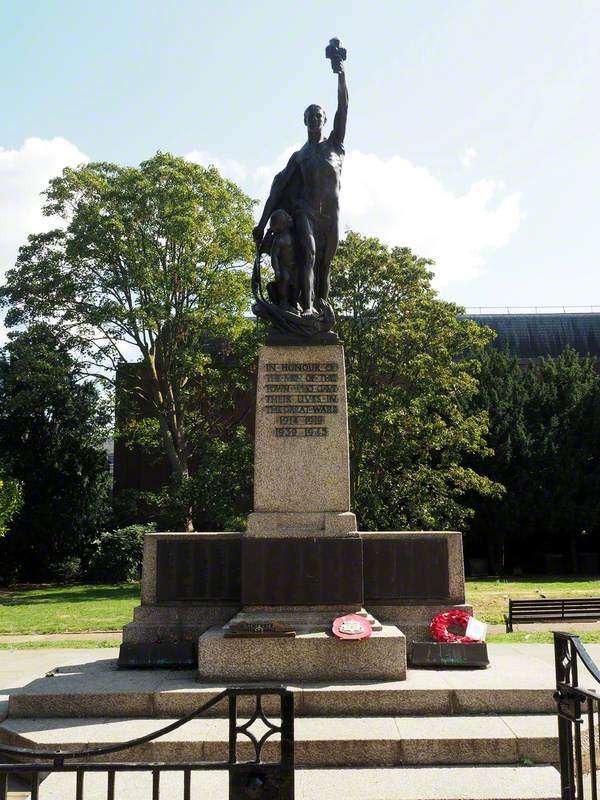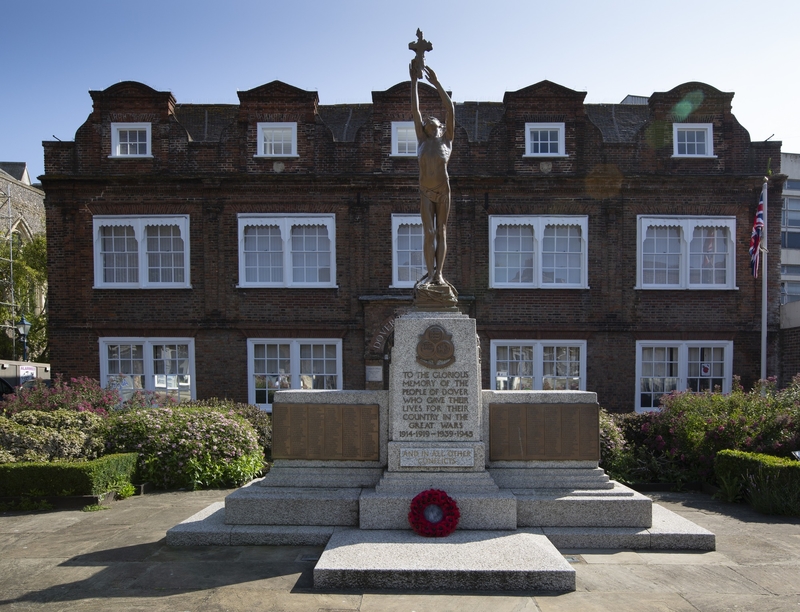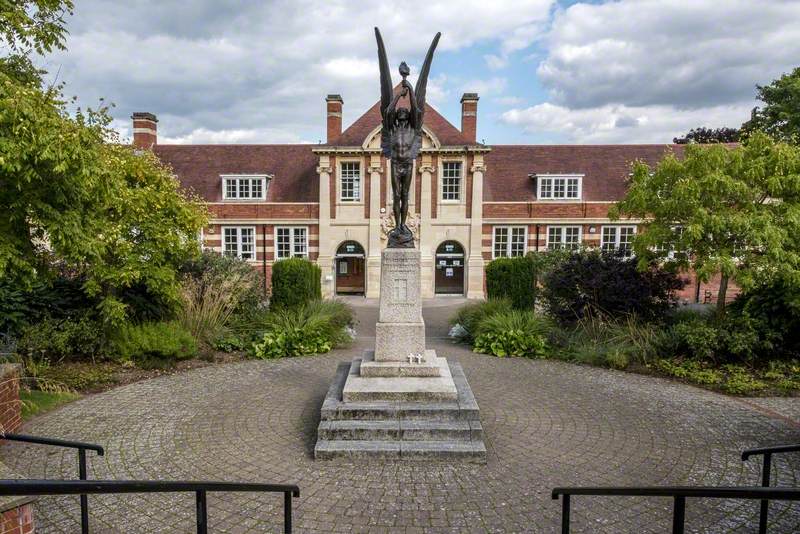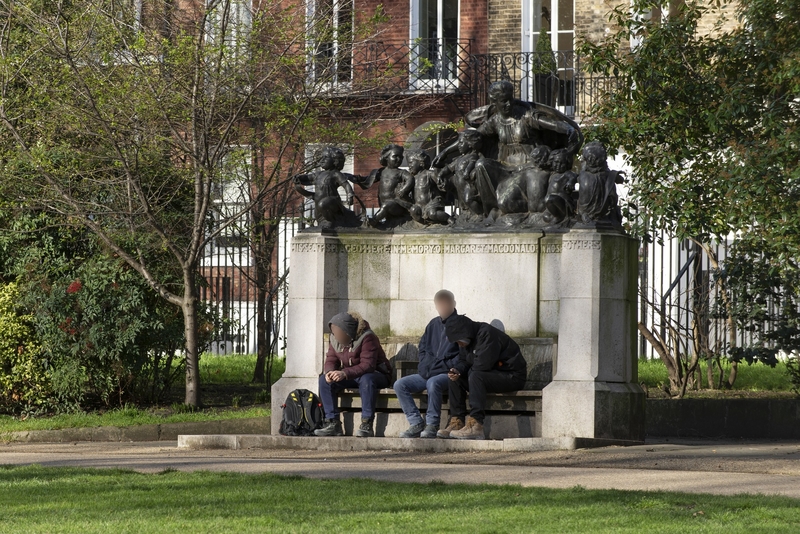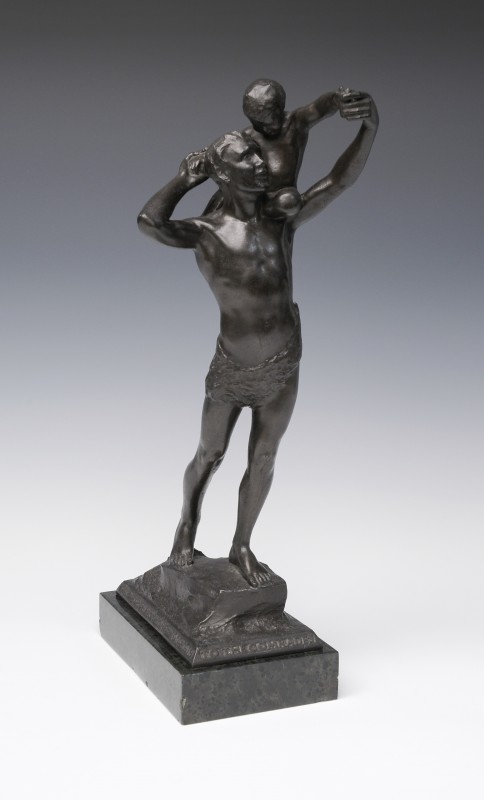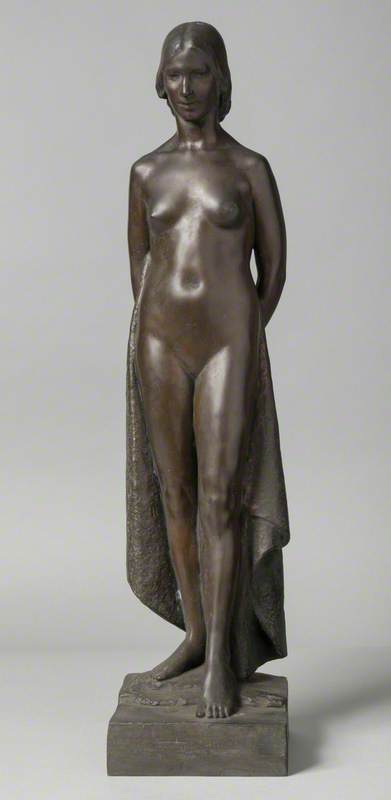
Richard Reginald Goulden was born in Dover, Kent, England on 30 August 1876. His father, John James Goulden (1841-c.1879), had been a cabinetmaker who had established a printing and stationery business in Dover in 1865 He studied at Dover School of Art and, on a scholarship, the National Art Training School in South Kensington, London, where he studied architecture and sculpture. He was awarded a travelling scholarship for sculpture. Following his return, he moved to Dunfermline, Scotland to work on a commission from the Carnegie Trust to design two panels. He subsequently remained in Dunfermline for two years and worked on several more commissions for the Trust including a statue of Andrew Carnegie, and a statue for a fountain in Dunfermline entitled "Let Noble Ambition Be the Thirst of Youth Always".
Other commissions on which Goulden worked included the memorial to the social reformer and political activist Margaret MacDonald, unveiled at Lincoln's Inn Fields, London in 1914; a sculptural group for the Dr Henry Jacob memorial fountain in Malvern, Worcestershire (c.1930); a commemorative plaque to the photographer Eadweard Muybridge in Kingston upon Thames, Surrey (1931); and a carved high-relief portrait of the artist George Frederic Watts for the façade of the Victoria & Albert Museum in London.
Goulden was a frequent exhibitor at the Royal Academy in London from 1903 to 1932. He also exhibited at the Royal Miniature Society in London; the Walker Art Gallery in Liverpool; and at the Royal Glasgow Institute of the Fine Arts. He participated in the British Empire Exhibition in London in 1924.
He was elected a member of the Art Workers Guild in 1912; a member of the Royal Society of British Sculptors (RBS) in 1906; and an Associate Member of the Royal Society of British Sculptors (ARBS) in 1923. He taught for a period at Hammersmith College of Art.
In 1908 he married the artist Muriel Olive Cecilia Gant, subsequently known as Muriel Olive Cecilia Goulden (1883-1955).
His address was given as 10 St Martin's Place, Dover, Kent in 1901; 80 Church Street, Chelsea, London in 1903; 54 Lamont Road, Chelsea, London in 1906 and 1908; and 426 Fulham Road in 1909 and 1932. He died in Sussex on 6 August 1932.
Text source: Arts + Architecture Profiles from Art History Research net (AHRnet) https://www.arthistoryresearch.net/
